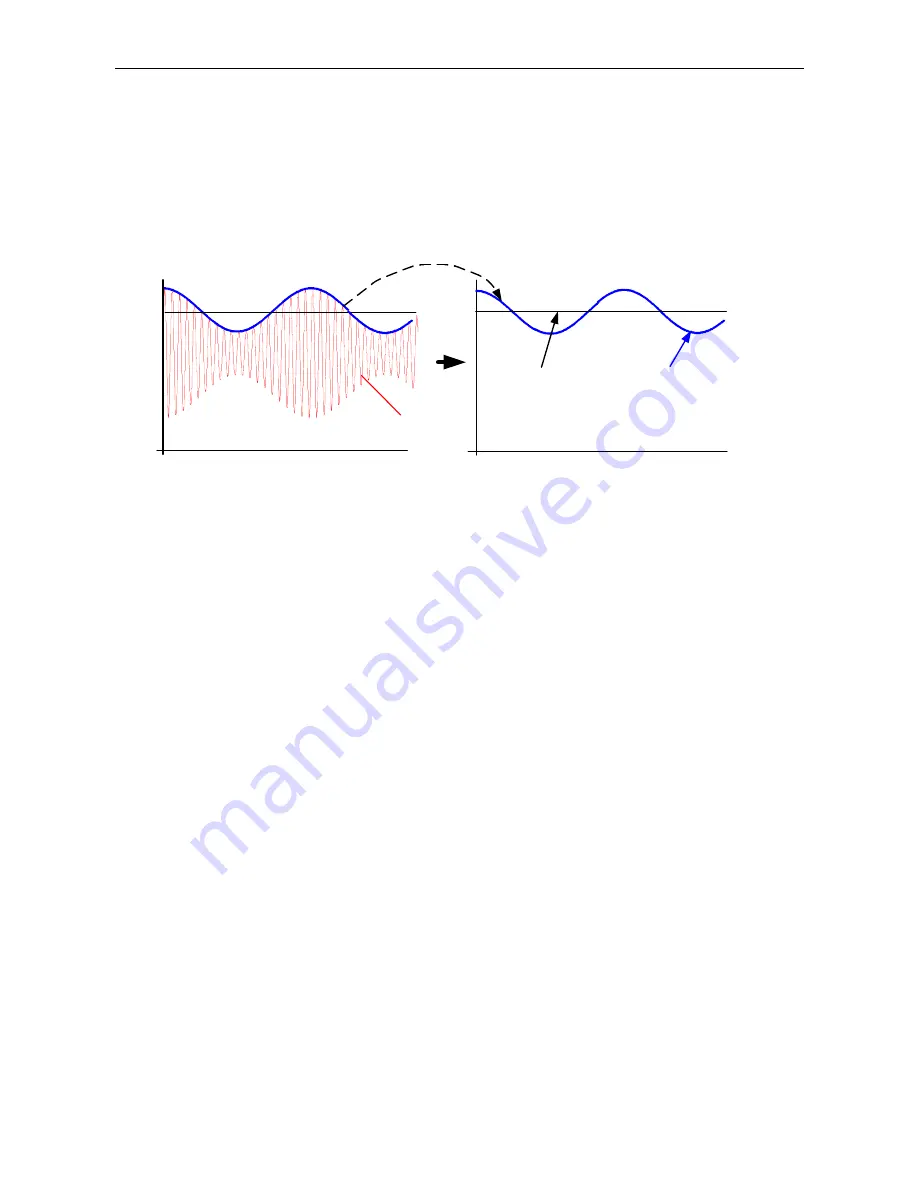
R&S FSH
Setting the Bandwidths
1145.5973.12 4.13
E-14
Video bandwidth
The video bandwidth smoothes the trace by reducing noise. When the filtered IF signal is envelope-
detected, an IF sine signal becomes a DC voltage in the video signal. If the sine signal is amplitude-
modulated, a signal whose frequency is the same as the AM frequency is produced in the video signal
apart from the DC voltage from the carrier. The Fig. below shows an RF signal modulated with a sine
signal and the corresponding video signal in the time domain.
AM RF signal
IF signal
Envelope signal
(video voltage)
DC voltage
from carrier
AC voltage
from modulation
Time
Time
Amplitude
Amplitude
The envelope signal contains a DC component corresponding to the carrier level and an AC component
whose frequency is the same as the AM frequency. If the bandwidth of the video filter is less than the
frequency of the AC component, the latter will be suppressed depending on its maximum frequency. If
the AM component is to be displayed faithfully, the cutoff frequency must be greater than the
modulation frequency.
If there is noise on the sine signal, the modulation signal can be thought of as noise. If the video
bandwidth is reduced, the high-frequency noise components above the cutoff frequency of the video
filter will be rejected. The smaller the video bandwidth, the smaller the noise amplitude at the video filter
output.
Therefore, the following rules of thumb can be applied to setting the video bandwidth:
•
If you are performing measurements on modulated signals, the video bandwidth must be sufficiently
large so that wanted modulation components are not rejected ( RBW).
•
If signals are to be kept free of noise, the smallest video bandwidth possible should be selected
( 0.1 x RBW).
•
If measurements are being performed on pulsed signals, the video bandwidth should be at least
three times greater than the resolution bandwidth so that the pulse edges are not distorted.
Like the resolution bandwidth, the video bandwidth has an effect on sweep speed. The spectrum
analyzer must pause before each measurement to allow the video filter to settle.
The R&S FSH has video bandwidths from 10 Hz to 3 MHz in a 1, 3, 10 sequence. When the default
settings are selected, they are coupled to the resolution bandwidth. The video bandwidth equals the
resolution bandwidth. When the resolution bandwidth is changed, the R&S FSH automatically sets the
appropriate video bandwidth. This means that, in many cases, the video bandwidth does not need to be
set separately. When the resolution bandwidth is changed, the video bandwidth is changed
automatically.
深圳市盛腾仪器仪表有限公司
Tel:0755-83589391
Fax:0755-83539691
Website: www.Sengt.com
















































